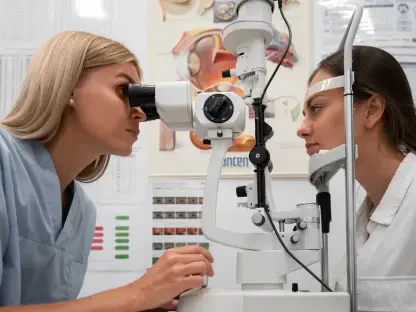I’m thrilled to sit down with Faisal Zain, a trailblazer in healthcare technology with a deep focus on medical device innovation. With years of experience in developing cutting-edge diagnostic and treatment tools, Faisal brings a unique perspective on how technology can transform patient care. Today, we’ll dive into the exciting intersection of generative AI and dermatology, exploring how it can streamline workflows, enhance patient access, and address key challenges in the field. Our conversation will touch on the practical applications of AI, the importance of data privacy, and the future of digital health in skin care.
How does generative AI stand out as a game-changer in dermatology compared to traditional approaches?
Generative AI is really shaking things up in dermatology by tackling the mundane, repetitive tasks that bog down clinicians. Unlike older tech that often forced doctors to adapt to rigid systems, AI can seamlessly fit into existing workflows. It’s about automating things like patient intake forms, organizing data, and drafting routine messages, so dermatologists can focus on what they do best—diagnosing and treating patients. The difference lies in its ability to learn and adapt, making processes faster without sacrificing the personal touch that’s so critical in healthcare.
In what ways can AI specifically reduce the administrative load for dermatologists?
AI can take over a lot of the behind-the-scenes work that eats up a dermatologist’s day. Think about sorting through patient-submitted photos, summarizing medical histories, or even drafting initial responses to common patient queries. These are time-intensive tasks that don’t require clinical judgment but still demand accuracy. By automating them, AI frees up hours for dermatologists to see more patients or spend more time on complex cases, ultimately boosting their efficiency.
How can AI accelerate clinical processes like patient assessments or medication prescribing?
AI speeds things up by handling the groundwork. For assessments, it can organize incoming data—say, images of a skin condition or a patient’s history—and present it in a clear, concise format for the doctor to review. When it comes to prescribing meds, AI can streamline the process by flagging potential issues, ensuring the prescription matches the diagnosis, and even drafting the necessary documentation. This cuts down on errors and saves time, meaning patients get treatment faster.
What role does AI play in improving communication between dermatologists and their patients?
Communication is huge in healthcare, and AI can make it more effective by personalizing it. For instance, it can draft detailed, easy-to-understand instructions or follow-up messages tailored to a patient’s specific condition or concerns. Dermatologists can then tweak these drafts to keep that human element intact. This ensures patients feel heard and understood, even in a digital setting, while saving the doctor from having to write everything from scratch under time pressure.
How do you ensure patient privacy and data security when integrating AI into healthcare platforms?
Privacy and security are non-negotiable. Any AI system worth its salt has to comply with strict regulations like HIPAA, ensuring data is encrypted during transmission and storage. Beyond that, it’s about transparency—patients need to know their information isn’t being shared without consent. We design AI tools to operate within secure frameworks, prioritizing trust alongside innovation. It’s a balancing act, but one that’s critical to maintaining confidence in digital health solutions.
What are some of the biggest challenges in bringing AI into dermatology workflows, and how can they be addressed?
One major hurdle is ensuring AI doesn’t overstep into clinical decision-making. It’s vital that dermatologists remain the ultimate authority, with AI acting as a support tool rather than a replacement. Another challenge is adoption—some clinicians worry about losing control. The solution lies in starting small, focusing on non-clinical tasks like paperwork, and showing tangible benefits like time savings. Building trust through practical, low-risk applications paves the way for broader acceptance over time.
What feedback have you seen from dermatologists about using AI in their practices?
The response has been largely positive, especially around the idea of cutting down on administrative grunt work. Dermatologists often say they’re stretched thin and crave more time with patients. AI addresses that pain point directly by handling the tedious stuff, letting them focus on care. For those who are skeptical, the key message is that this tech isn’t here to replace their expertise—it’s here to amplify it by removing distractions.
What is your forecast for the role of AI in dermatology over the next decade?
I believe AI will become a cornerstone of dermatology in the next ten years, making specialist care far more accessible. Imagine a world where every consultation starts digitally, with patients submitting data that AI organizes for the doctor before they even step into the office. Wait times could shrink globally, burnout among clinicians could drop, and millions more people could access expert care. It’s an ambitious vision, but with the right focus on ethics and usability, AI has the potential to revolutionize how we approach skin health.









